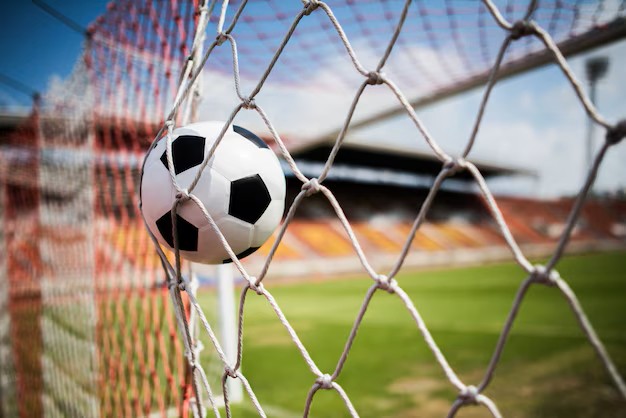
PSG is the abbreviation from Paris Saint-Germain and it is one of the most famous football clubs in Europe well known for its sportive performances but also for its distinctive style. With an identity that is closely linked to the big city Paris, PSG stands out through its elegance both on the field and outside of it. The PSG kit is not only a basic sportive uniform but a visual symbol of the club’s values and tradition. Over the years the design of the kit has evolved but it always kept the emblematic elements such as the famous combo of red, white and blue.
The History of the PSG Kit
The history of the PSG kit reflects the evolution of the club, from a young team from the ‘70 to a global brand. Founded in 1970 the famous football club Paris Saint-Germain initially adopted a basic kit that was mainly in red or white influenced by the founding figures and the desire to represent Paris. However, the classic design was introduced in 1973 with the blue shirt with a vertical red stripe flanked by two white lines designed by Daniel Hechter, former club president and fashion designer. This design has become iconic and it is introduced quite often in modern editions.
Over the years the Paris Saint-Germain kit has been through a lot of changes adapting to fashion trends and commercial influences. The dark blue colour has become dominant and the stripes might vary in positioning and thickness. The sponsors such as Nike from 1989 and more recently Jordan Brand from 2018 have bought a plus of visibility and style contributing to the transformation of the equipment into a symbol of urban culture. Other brands such as Accor or Qatar Airways had a significant visual impact on the design. Today the PSG kit is not only a sporting symbol but also a fashion statement and a Parisian identity.
Football History also mentions ‘For the longest time, Paris did not have a football club that truly belonged to the elite. That finally changed in 1970, when a group of businessmen went through with the plan of merging Paris FC and Stade Saint-Germain into a single club named Paris Saint-Germain. (The year of establishment is somewhat debated though, since the club was affiliated with the Fédération française de football already in December 1969. Not surprisingly, PSG immediately drew sympathies of the Parisian crowd, which was exalted to finally have a club that could contend for domestic trophies.’
The New Paris Saint-Germain Kit for the 2024/25 Season
The new PSG kit for the 2024/25 season keeps the elegant touches and the club’s identity but it also brings a few notable details. The main jersey from the home kit stays loyal to the traditional colour, dark blue with a vertical red stripe that is symbolic for PSG as a team, as a club. The logo of the club is positioned right in the middle of the chest and under it there is the motto ‘Ici c’est Paris’ subtly embroidered to affirm the connection with the city. The collar has a simple design, round, bringing a retro vibe and on the inside of the collar there is a red start symbolizing the excellence. The away and third kit were made in a minimalistic design, the away one is white with gold accents and the third one is completely black with dark red details.
The kits are produced by the famous brand Nike through its advanced Dri-FIT ADV line offering maximum breathability and comfort made from recycled materials. This kit combines tradition with innovation being designed not only for the performance on field but also as a style item suitable both on the field and in contemporary urban culture.

Famous Players that Wore the PSG Kit
PSG (Paris Saint-Germain) have become a magnet for famous football players in the last few years. One of the most important players is Ronaldinho who signed for PSG in 2001 for 2 years and he amazed the supporters with his spectacular technique quickly becoming an idol for them. After he played at PSG, the football club had a progressive growth culminating in top-level acquisitions following the takeover of the club by Qatar Sports Investments in 2011.
The next player that had an amazing performance is Zlatan Ibrahimović who played from 2012 to 2016 and he was one of the biggest stars of the club scoring over 150 goals and helping win multiple Ligue 1 titles. Edinson Cavani the all-time goal getter was an essential player from 2013 all the way to 2020.
Then a historical moment was the transfer of Neymar in 2017 for a world record amount followed by Kylian Mbappé considered one of the best players of his generation. In 2021 PSG bought the legend Lionel Messi who fascinated every PSG supporter. These players have contributed significantly to PSG's rise as a force in international football.
Britannica also mentions ‘Later in 2021 Messi signed with Paris St.-Germain (PSG), where he joined superstars Kylian Mbappé and Neymar, and that year he received yet another Ballon d’Or. He helped PSG win the Ligue 1 title in each of his two seasons with the team. In 2023 Messi joined Inter Miami of Major League Soccer. He scored 20 goals in the 2024 season and was named the league’s MVP. Despite his dual citizenship and professional success in Spain, Messi’s ties with his homeland remained strong, and he was a key member of various Argentine national teams from 2005.’
Conclusion
The PSG kit combines tradition with innovation by keeping the emblematic colours while also adding modern details and performant technologies. The design transmits a Parisian identity and the collaboration with Nike and the fashion influences increase the global attractivity of the club. This kit is not only a sportive uniform but a statement of style and ambition. The consolidation of PSG's image as an international brand continues through every visual detail. Besides the comfort and the new technology used can positively contribute to players performance on the field.